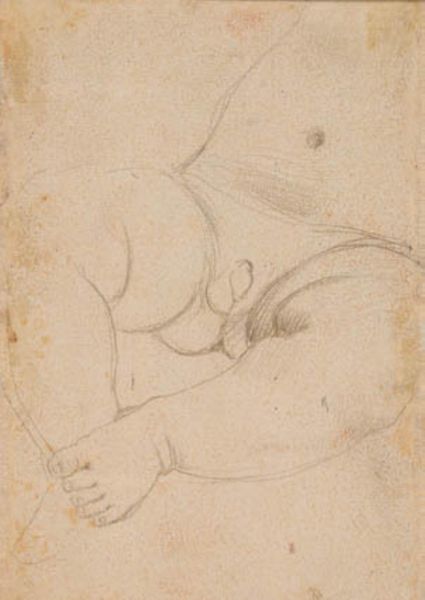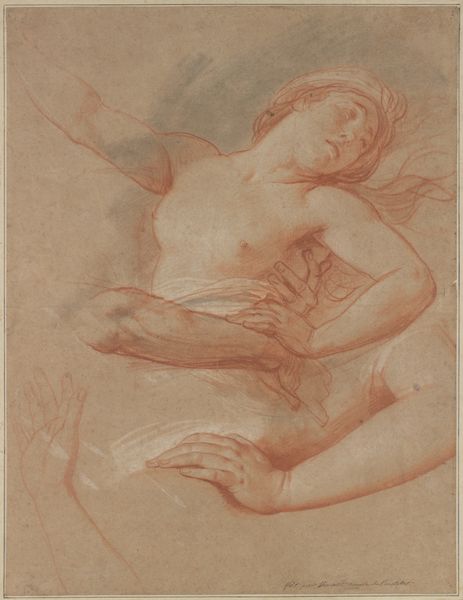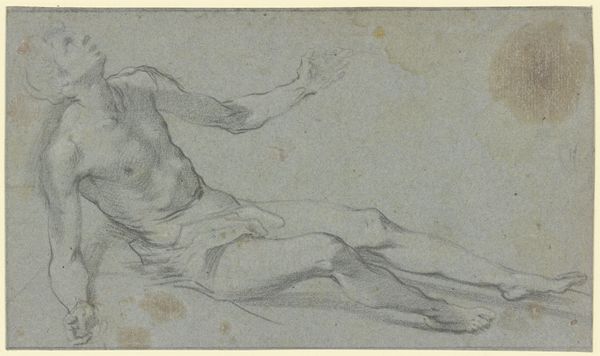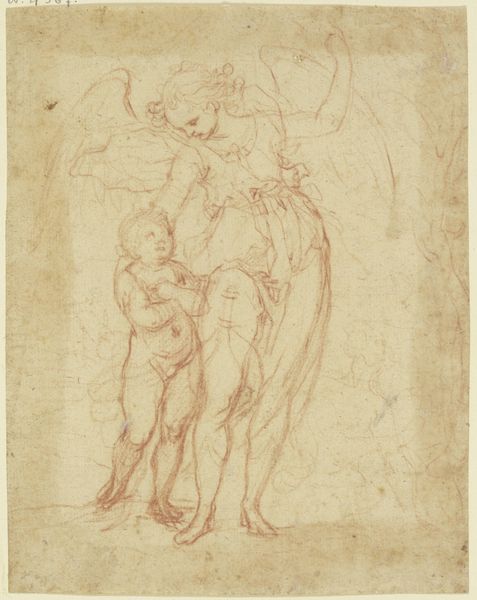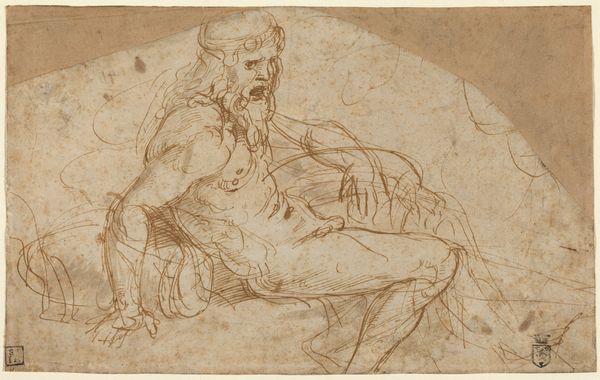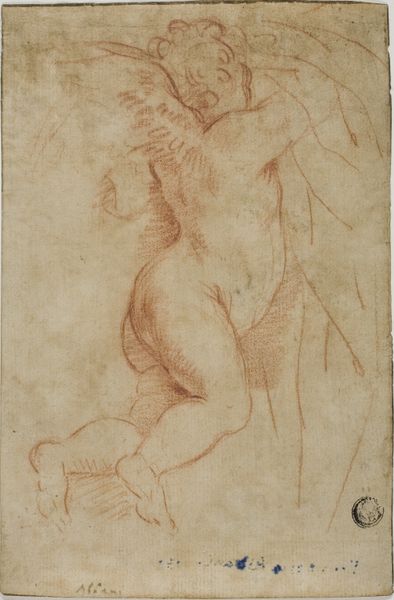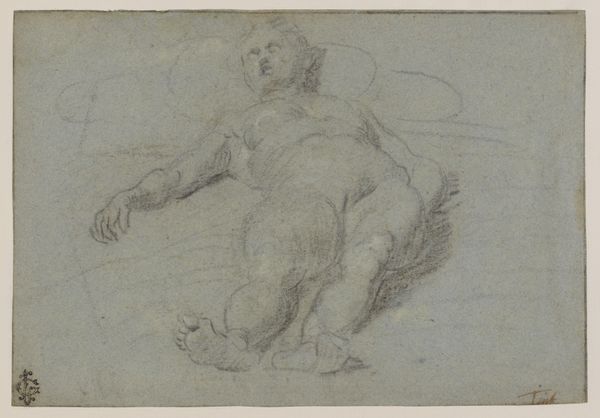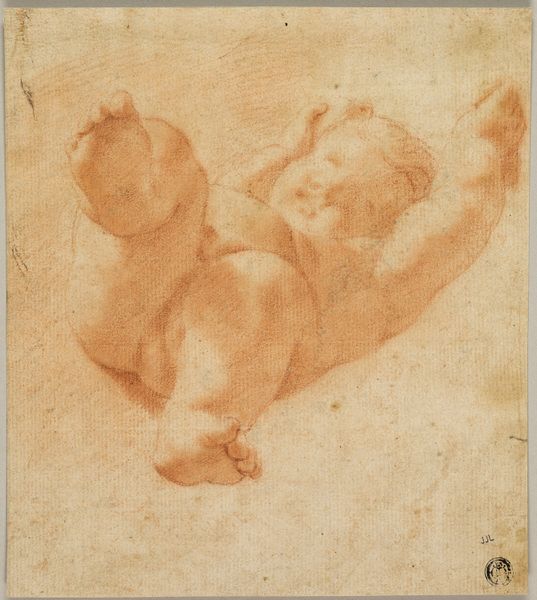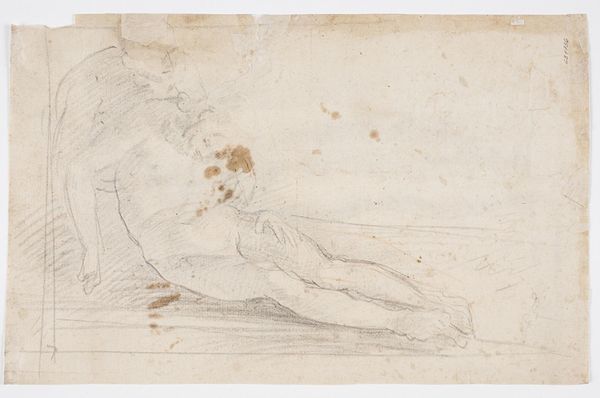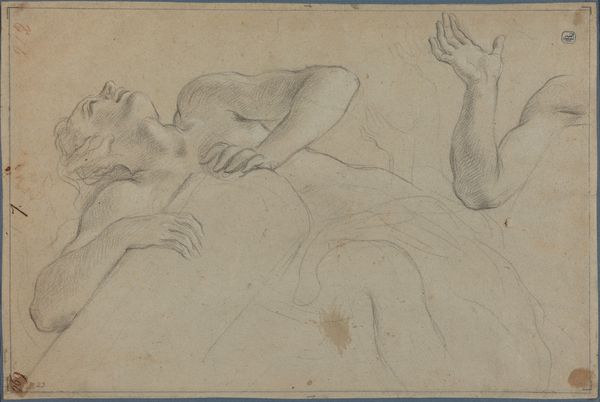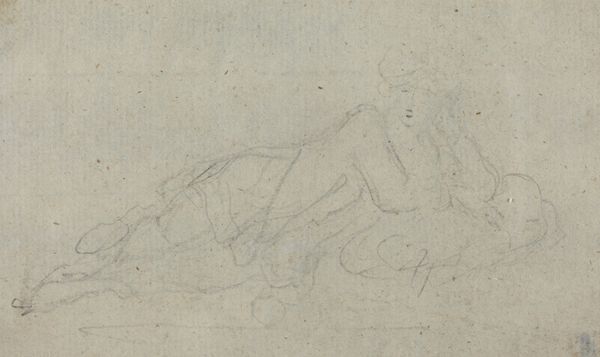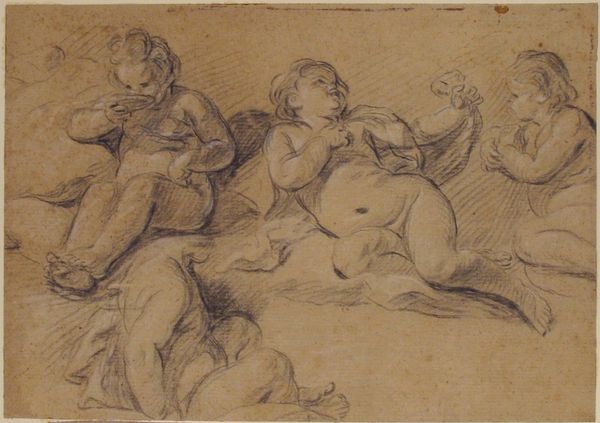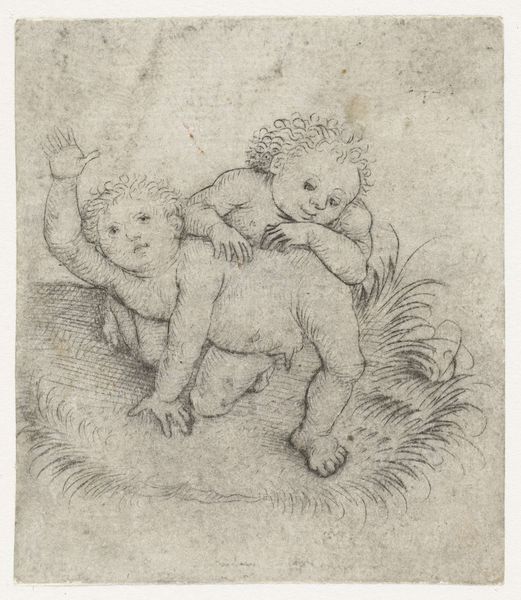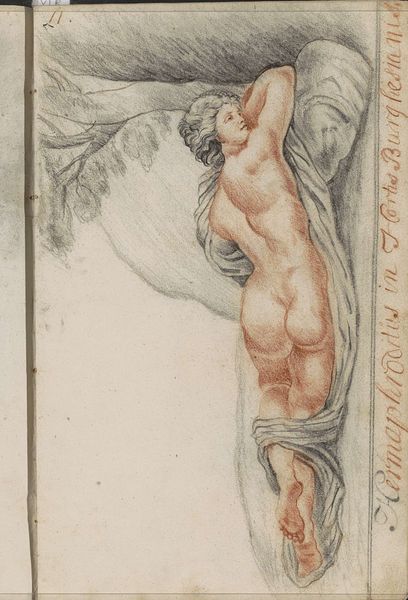
Dead Man with Outstretched Arm c. 17th century
drawing, print, paper, pencil, chalk, charcoal
portrait
drawing
baroque
figuration
paper
pencil
chalk
charcoal
history-painting
academic-art
italian-renaissance
Dimensions: 190 × 202 mm
Copyright: Public Domain
Curator: Welcome. I’d like to introduce "Dead Man with Outstretched Arm," a compelling sketch attributed to Louis de Boullongne the Younger, likely created in the 17th century. It’s currently held here at the Art Institute of Chicago, rendered in pencil, chalk, and charcoal on paper. Editor: It's... intense. The swirling lines amplify the feeling of anguish and death. The outstretched arm immediately catches your eye. It feels like a cry for help that will never be answered. Curator: Indeed. Boullongne, working within the Baroque tradition, frequently created studies of figures for larger history paintings. This drawing likely served as a preparatory study, common practice at the time. It offered artists an avenue to experiment with composition, anatomy, and emotional expression before committing to a large canvas. Editor: I wonder what story he had in mind when he conceived this sketch. Was this for a biblical scene? Or something from classical mythology? His suffering seems so visceral, the type you find in history but also on today's streets, battlefields, and detention centers. The academic style contrasts with that profound grief. Curator: Precisely, that tension between formal training and raw emotion makes this drawing so engaging. Academic art, though often criticized for its rigid rules, did provide a language for portraying complex narratives and emotions. The figure's dramatic pose, coupled with the delicate rendering of the face, captures that Baroque sensibility, the very drama that drove many large scale artworks. Editor: The fact that it's a sketch also contributes to its impact. There's a vulnerability to it. This image lacks the heroic narrative you expect, revealing raw emotion that humanizes and maybe subverts whatever propaganda Boullongne wanted to convey in the larger piece. It serves as a somber reminder of our mortality and fragility as a society. Curator: Absolutely. This drawing prompts questions regarding how academies defined tragedy, violence, and what constitutes the epic. Editor: It urges us to question whose stories get told, and whose deaths are remembered or ignored, especially nowadays with access to immediate violence through the media. Curator: An enduring testament to the power of preliminary sketches to capture and transmit human pain across the ages, echoing long after the final painting is done. Editor: An unflinching depiction, inviting reflection on human suffering across eras.
Comments
No comments
Be the first to comment and join the conversation on the ultimate creative platform.
